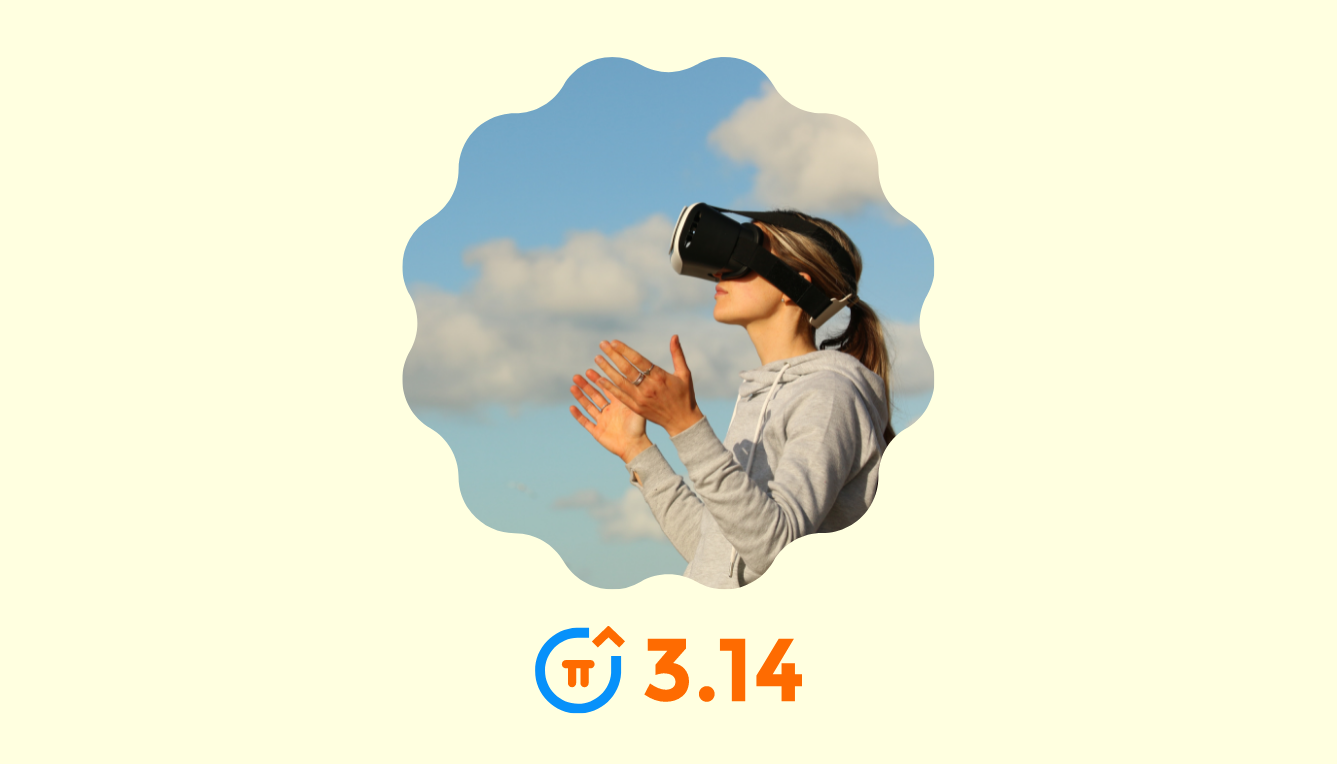With daily technology advancements, new mediums for advertising a product are appearing. AR and VR advertising are the latest entrants. With a whopping spending increase of 94% from 2014-2017, AR and VR are emerging as the newest channels in the marketing industry. They have already attracted more than 80% of companies. These ads are helping advertisers in transferring the ownership of the product from producer to consumer and thus brands and agencies are constantly keeping track of them.
AR or Augmented Reality is an interactive experience in which the real-world environment is “augmented” by the computer-generated infographics across various modalities. AR doesn’t obstruct your vision and superimposes an object or image over what you are looking at. Pokemon Go was a good example of an augmented reality game.
VR or Virtual Reality is very different from AR. While AR just superimposes an object, VR completely blocks your vision and takes you into a totally different world. Often referred to as “Mixed Reality” sometimes, VR has the ability to play with your mind.
With an engaging experience, many brands feel that AR and VR together are the future of the marketing industry. More than 55% of companies have admitted to doing augmented reality marketing. These technologies, or rather realities, have overwhelmed them so much that many of the key players have already termed them as the “realities of tomorrow”.
StrikeSocial has been analyzing the scope of new channels like AR and VR in the advertising industry for long. Their reports mention that “AR Advertising Spend” increased by a whopping 94% from 2014 to 2017. The spending which was around $0.6 billion in 2014 went up to $12. 8 billion in 2017. In contrast to this, the amount spent on the display and search ad grew only 53%.
These stats clearly depict that AR and VR are being preferred by advertisers over other not-so-appealing methods. AR market is expected to reach $61.39 billion by 2023. By 2020 only, the AR and VR advertising world together is expected to reach $29.5 billion.
Though there are some skeptics who still believe that augmented reality and virtual reality need some time. They believe that these new technologies are still in their infancy. However, the trends suggest that AR and VR are both growing at a tremendous rate. Brands need to understand that now is the time to grasp these technologies. Juniper reports say that the business world is looking to invest about $2.4 billion in the industry.
Profits of AR/VR Based Advertising
- AR and VR are both immersive tools.
- They make a product more engaging as customers love interacting.
- Customers get an inside glimpse.
- It evokes an emotional response.
- Customers get the real world sense of what the product will look like.
AR and VR incorporate various sensory modalities in them. These include visual, auditory, haptic, somatosensory and even olfactory. When customers get to observe on their own, brands earn their trust easily.
What do the brand managers say?
Many brand managers have applauded this addition in the advertising industry. Most of them have accepted its potential. They believe that advertising through AR and VR technologies is more convenient, has speed and leaves a long-lasting impression upon the users. Many believe that these methods of advertising are so impressive that most of the users recommend their friends to try the product.
Snapchat
Snapchat has emerged as a pioneer in the AR advertising field. Snapchat taught people how their cameras can be more interactive and not limited to just CLICKING pictures. With Snapchat lenses, the company was one of the very first few companies to test augmented reality. More than 70 million use Snapchat’s AR lenses to express themselves.
Now, the company has introduced a new “Lens Studio” which allows users to create their own filters based on AR technology. In a media briefing, the company representatives said that more than 400,000 lenses have been created which have been shared more than 15 billion times.
Snapchat is one of the few companies which are utilizing the true potential of the ‘new reality’. With every passing day and every new advancement, Snapchat is introducing new features using AR. Recently launched “Landmarkers” allow users to incorporate historical monuments in their snaps. They have been even teaming up with many companies like Nike and others and are continuously releasing new templates. Sanpchat is exploiting AR to its full extent.
Facebook Ads
Facebook has also been running AR embedded ads in its news feed for a while now. Facebook is the platform with the biggest reach among the millennials. It has the capability to influence masses and AR ads have been received well by the users of the app.
Facebook AR ads feature 360° views and product testing on faces, especially makeup products. These features have bridged the gap between the seller’s store and the buyer’s home. Michael Kors was the first brand to test Facebook AR ads. Facebook also gave advertisers an option to allow users to buy the product instantly.
Brands believe that AR advertising connects them emotionally to the users and they are able to relate in a better way. By putting the product in the hands of the users, AR boosts their sales. AR ads have reported a 77% better performance as compared to the static images.
Ray-Ban
Ray-Ban became the first advertiser to extract the real-time benefit of AR advertising. While advertising their sunglasses on Instagram, Ray-Ban gave its users an option there only to buy the glasses through a direct process.
Ray-Ban utilized the “emotional period” of humans. Following the AR session, users stayed connected with the ad for a while and in that duration only, the “Buy Now” button tempted them.
Google introduced augmented reality on mobile and web browsers to make AR accessible to everyone. Google’s plan includes removing the need of users to download and install a separate AR app. Introducing AR on the web will help users view AR content on a website directly without installing a separate app or software.
This addition is going to be a boon for advertisers as it will be incorporated in browsers across all platforms. The web brings the most revenue for Google. More than 70% ad revenue of Google comes from the web.
Apple
When Apple introduced AR in 2017, it promised to remove the line between the real world and the virtual world. Apple’s main aim is to use AR to help advertisers rank their apps high in the Apple app store. However, most of the advertisers have expressed their disappointment. Within 2 months of launch, it became 14% times more difficult for apps to rise in the search results.
One of the reason is that more developers are creating AR-enabled apps. Tim Cook mentioned that around 1,000 AR apps were created within 2 months. Also, the search for “augmented reality” rose by 50% in that period. More than 2 million apps are listed in the Apple app store. Brands needed an immediate enrollment of AR introduction in their apps otherwise their app won’t rank.
Oreo
Oreo used VR technology to create a virtual world which was tempting enough for users to touch and feel. Doors made up of biscuits, rivers and fountains of chocolates, cream spouts were some of the attractive features.
Many other brands like Heinz and Starbucks have also launched “interactive object” feature. IKEA is helping its users by showing them how particular furniture would fit in their room.
AR and VR ads are expected to grow at a rate of 30.79% during the 2017-2021 period. Currently, these 2 technologies have a combined mobile user base of more than $1 billion users. AR has been adopted more smoothly as compared to VR but VR is expected to follow pretty soon.
Gaming brands are the ones who are benefitting from VR. The trend is also becoming popular among the users. Seeing this, Oculus Rift reduced the price from $799 to $199 once.
AR has made its mark in the store-purchasing market but VR has been influencing the gaming industry and the entertainment sector mainly. From dwell time to click-through rates, AR and VR are triumphing in every aspect. AngelList has listed 1320 augmented reality startups with an average valuation of $5 million.
Segments driving global AR and VR advertising spending
AR and VR advertising will majorly depend on the following segments:
- Consumer Hardware-15.6%
- Virtual Reality Games-6.6%
- Augmented Reality Games-5.1%
- Onsite Assembly and Safety-3.1%
- Retail Showcasing-2.9%
- Others-66.7%
Who is spending more?
Deloitte reports that 88% of the companies with annual revenues of $100 million to $1 billion have been leveraging AR and VR technology.
Among smaller firms, 10% of marketers have already started using these new ‘realities’ while 72% among those remaining are expected to join soon.
Other Brands Joining
Interestingly, AR and VR advertising is not limiting itself to only stores and merchants. Many news agencies are also planning to test AR. Some of them include:
- The New York Times
- The Washington Post
BBC launched its own augmented reality app to give viewers an opportunity to look at civilizations totally differently.
Quartz, a business news corporation, is using illustrated-text based stories with augmented objects.
Platforms for AR/VR Advertising
The popularity of these technologies has been boosted mainly by the ease of accessing the platforms providing them.
- Google Chrome and Mozilla Firefox.
- Banner Ads (ARDP)
- Facebook Messenger Bots
- Social Media Sites
For new emerging platforms, companies like Jaguar and BMW are planning to offer windshields embedded with AR techs.
Factors Affecting Progress
Though they are advancing at a good rate, AR and VR face 2 main obstacles.
- High Initial Buy-In Price
- Low Adaptation Rate
What do brands need to keep in mind?
Marketers should ensure that they do not get carried away by these new technologies. When using AR and VR, they should ensure:
- The element provides a meaningful interaction.
- The communications should be authentic.
It has been estimated that the print ads retain 82% of the factual information while the AR ads retain only 59%.
AR and VR give marketers liberty to customize the experience according to the users. But many brand managers confuse the two. The difference between these two needs to be identified properly so that advertisers can align their own KPIs differently with the AR and VR value propositions.

